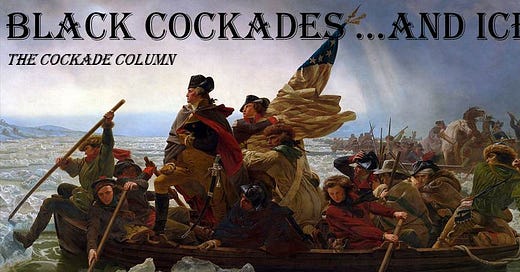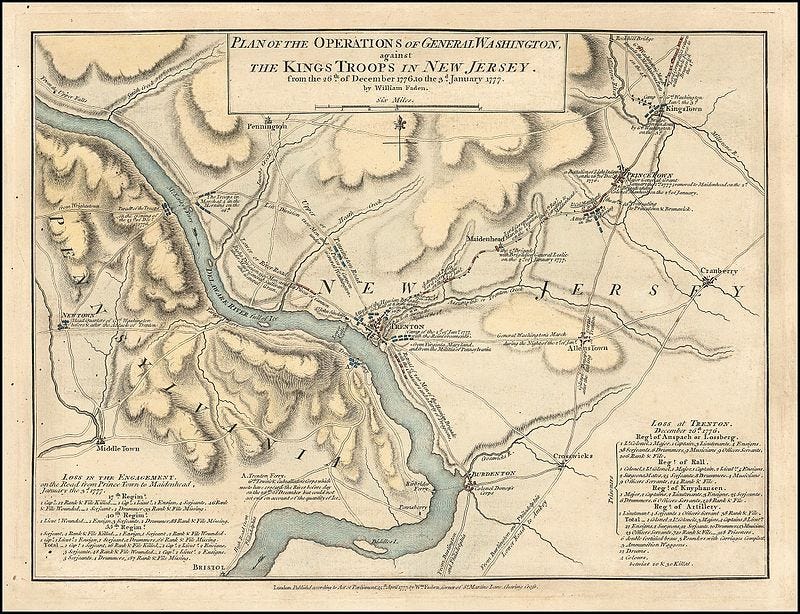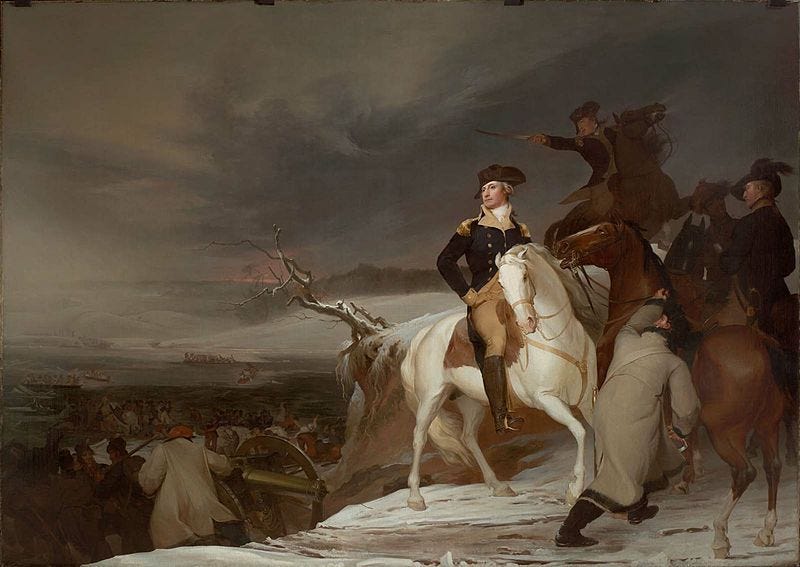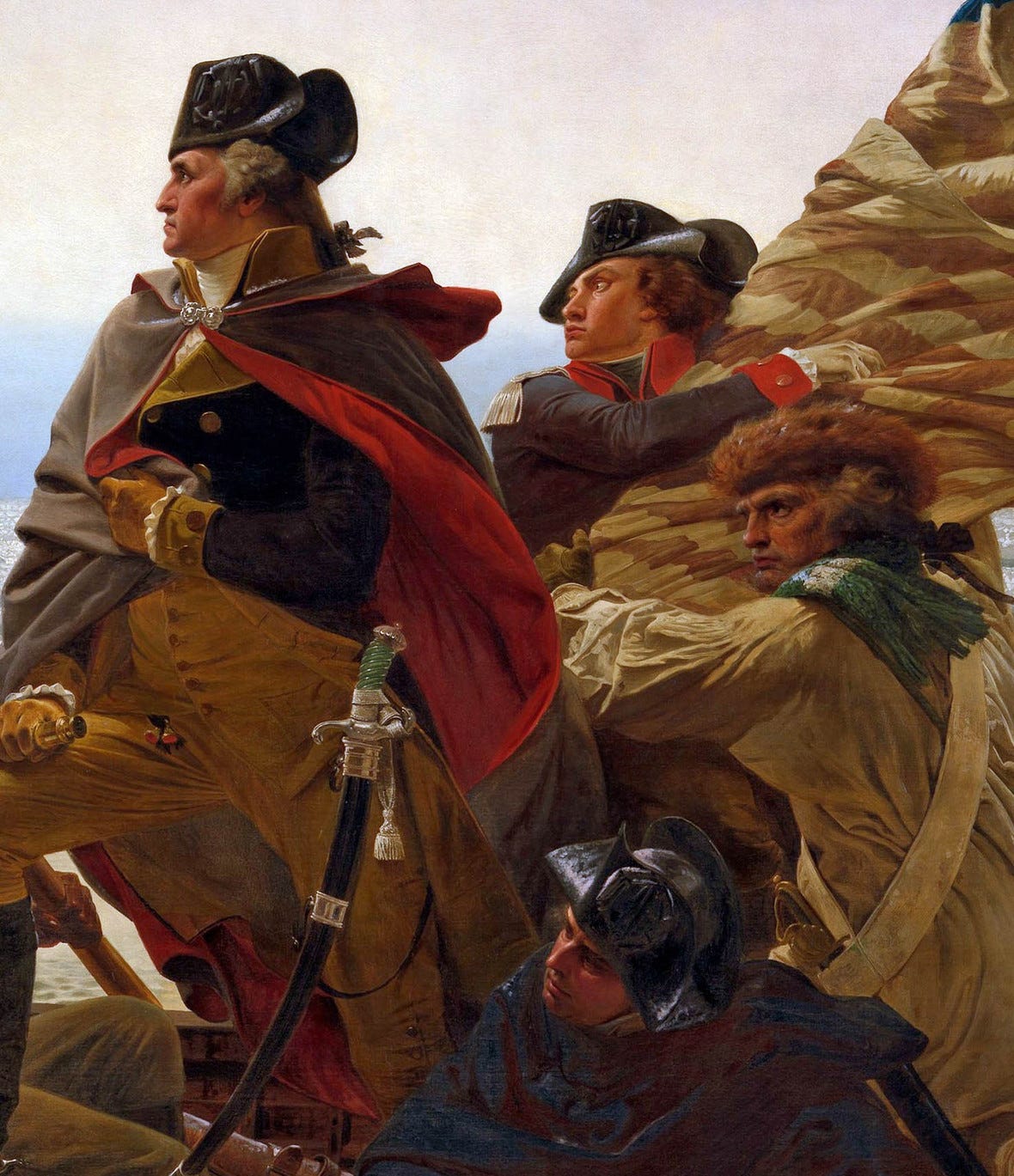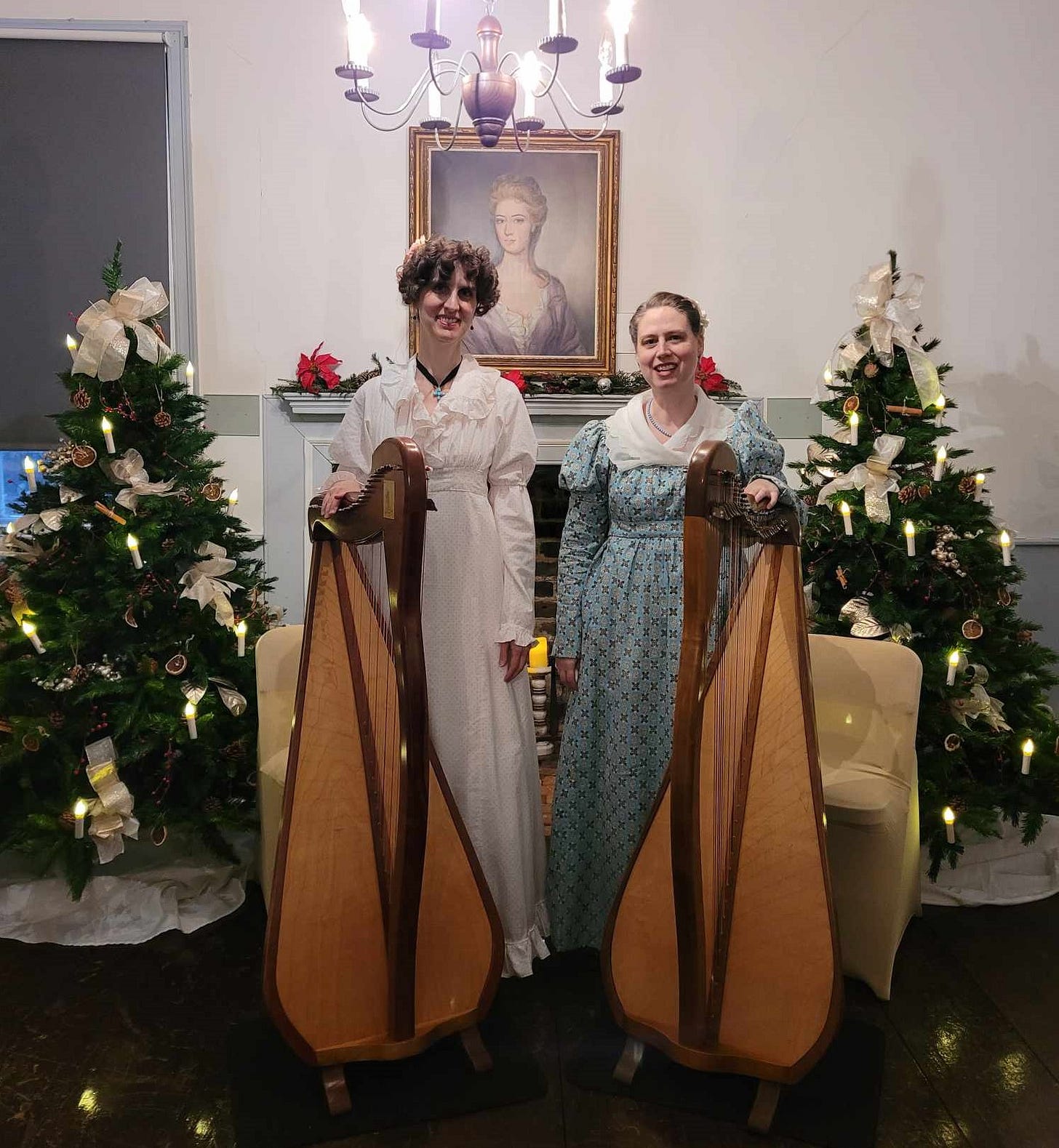Black Cockades... and Ice
Measuring by results seen over the last 200+ years, George Washington may have had the best Christmas present of all 248 years ago!
(On a personal note, I know I’ve missed the last two weeks of Cockade Columns… see my remarks at the end about that!)
On the Losing Side
1776 was a tough year for Washington and his troops. Though they managed to force the British to evacuate Boston, there was little else to cheer about. True, America had declared her independence on July 2 but that was nothing to be happy about unless the new nation could back up her claims with some battlefield victories.
Washington had done a great job of keeping his little militia army together. But most battlefield contact with the British in 1776 resulted in loss or retreat - or both. The army and the nation were becoming discouraged.
Surprise Attack
On Christmas Day, Washington secretly organized his troops for a daring and dangerous move: a surprise attack on the British.
It was daring and dangerous because there was a big obstacle in the way: the ice-blocked Delaware River.
Nevertheless, Washington's troops skillfully navigated soldiers, horses and cannons across in the wintery night. Ice jams prevented some troops from crossing and there were a few incidents of soldiers actually falling into the freezing water. The secret password "Victory or Death" was not so much melodramatic as it was the honest truth.
As we know from history, "Victory" was the eventual outcome! The British were surprised and defeated. Because of the bravery of Washington and his men, the fledgling United States was given a boost of confidence that would eventually lead to victory in the war.
Black Cockades
Americans inherited the black cockade from Great Britain. The House of Hanover (the Kings George) wore black cockades, as did all who served under them in the military.
Eventually the newly formed United States would choose to add an eagle to the center of their black cockades, thus identifying themselves as Americans. But at the time of the Delaware crossing, Washington and his soldiers were still wearing simple black cockades.
It's interesting to see how various artists depict these cockades. For instance, Emmanuel Leutze created his famous painting (in the masthead) 75 years after the crossing. As you can see in the closeup, his cockades are big full fluffy black rosettes, a style that was actually more Victorian (1800s) than Georgian.
Sully's painting in 1819, a mere 43 years after the event, shows more authentic Georgian cockades - flat black rosettes or rectangles of fabric.
Probably the most accurate painting of the event was actually created in 2011. Mort Kunstler, famed historical artist, designed his artwork 253 years after Washington's crossing. But he drew on original accounts to make sure his depiction showed the reality of the ice-cold brutal crossing endured by Washington and his men.
You can read more about the details of his painting here.
And I’ve chosen to commemorate the event with cockades that aren’t completely authentic but use historic elements. The black-and-white colors harken back to the cockades worn by the Continental Army. If you chose red, white and blue, you celebrate the colors of our flag. The center emblem is Leutze’s famous painting. I offer these as both pins and ornaments.
Merry Christmas!
You may have noticed I missed a couple of weeks of Cockade Columns. Life has been very crazy for our family lately as we deal with holiday events, harp performance gigs (my sister and I are professional harpists), and some family health crises. I haven’t disappeared but I will be taking a little bit of a break over the holidays.
It's been a fun year researching cockades and sending you the stories I find! I hope you've enjoyed them. May God bless you and keep you this coming year.
Did a friend forward this to you?
Want it to come right to your inbox every week?
You can sign up by clicking the button below and filling in your email address. Also feel free to forward this Column to your friends... they may want to subscribe as well!
Thanks for reading!
Regards, ~Heather Sheen


